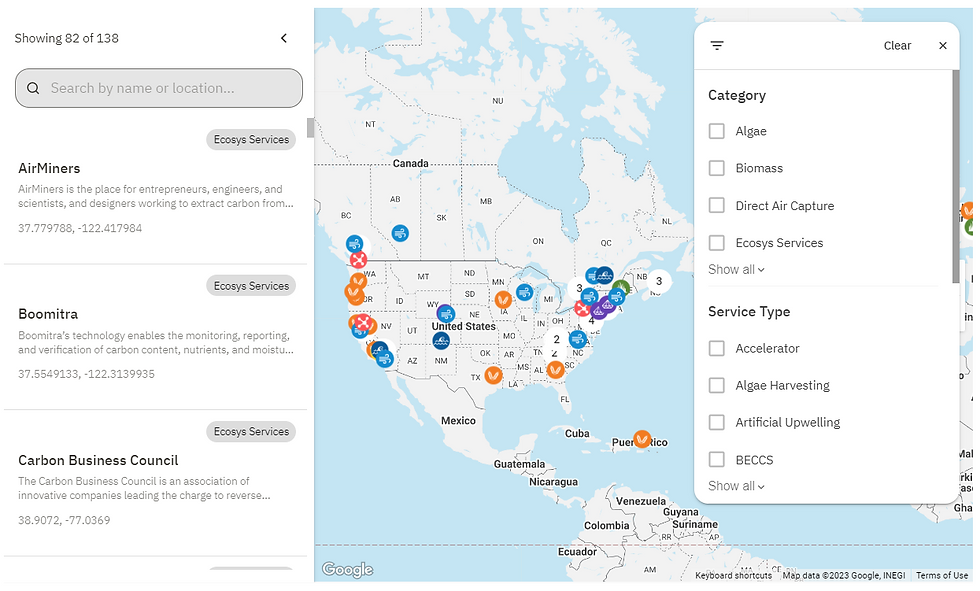What is No Code Map App?
- Nan Zhou
- Oct 4, 2023
- 3 min read
Updated: Apr 2
No Code Map App allows any business to build custom interactive maps with their data, in minutes. Custom-built quality maps with no coding required. Work for any industry and dataset. Easy enough for beginners and powerful enough for professionals.
Our maps are designed to engage & convert.
For location-based businesses, maps are the best medium to showcase your operations and engage your website visitors. So, don't settle for a basic map. All of our maps come with built-in map search, filters, detailed location profiles, clickables, booking links, promotional media, calls-to-action, and more. Build the best map experience for your website visitors so you can convert them into customers, sooner and more directly.
The Problem.
The problem is existing no-code tools can only map simple datasets, so custom code is the only way you can get your dataset fully mapped and properly integrated. But, custom code is expensive and time-consuming. We want to address this gap in the market with a no-code platform that automates map creation and data processing, and more.
The Solution
With No Code Map App, beyond just design customisation, you can:
1. have your database fully integrated, regardless of the data type or where it is stored,
2. have ready-to-use maps automatically generated based on your data (including custom map filters, calls-to-action, side bar list view etc),
3. have your maps updated automatically with real-time data sync, and
4. link any website or third party app to your map as calls-to-action.
For location-based businesses, the combination of automated map creation, real-time data sync, and third party app integration means their visitors will be able to visually interact with their database in real-time and perform all kinds of user-specific tasks directly from the map.
How it works
Step 1. Choose a template
We have a collection of ready-to-use map templates designed for various industries and use cases.
Step 2. Connect your data
You can copy-paste from a spreadsheet or sync with Google Sheets, Airtable or Webflow CMS. Eventually we will allow integration with any database. Once your data is integrated, a ready-to-use map will be built automatically based on your data (including custom map filters and calls-to-action). We will also allow automatic and real-time data sync so your maps can be updated automatically.
Step 3. Customise
With complete design control, you can customize everything including colour, font, map style, pop-up, side-bar, map filters, calls-to-action and more.
Once finished, these maps can be published as a stand-alone page or embedded onto any website regardless of the platform.
The global digital map market is expected to grow at a CAGR of ~15% from 2023 to 2030. One of the main drivers of growth is the increasing adoption of digital map across several industry verticals. Our addressable market would include all location-based industries such as healthcare, real-estate, travel, consumer, retail, restaurants, accommodation, events etc.
We have seen use cases from over a dozen different industries including healthcare, consumer, retail, real estate, travel, events, and technology. Their site visitors can perform all kinds of tasks, like run live map searches, see which locations have what they are after, then contact, book or buy directly. This could be used to find anything, like a medical consultant, a live event, a specific brand of cheese, a baby-friendly restaurant, a quiet café with power outlets, or an apartment for rent.
Thank you!
Nan




Comments